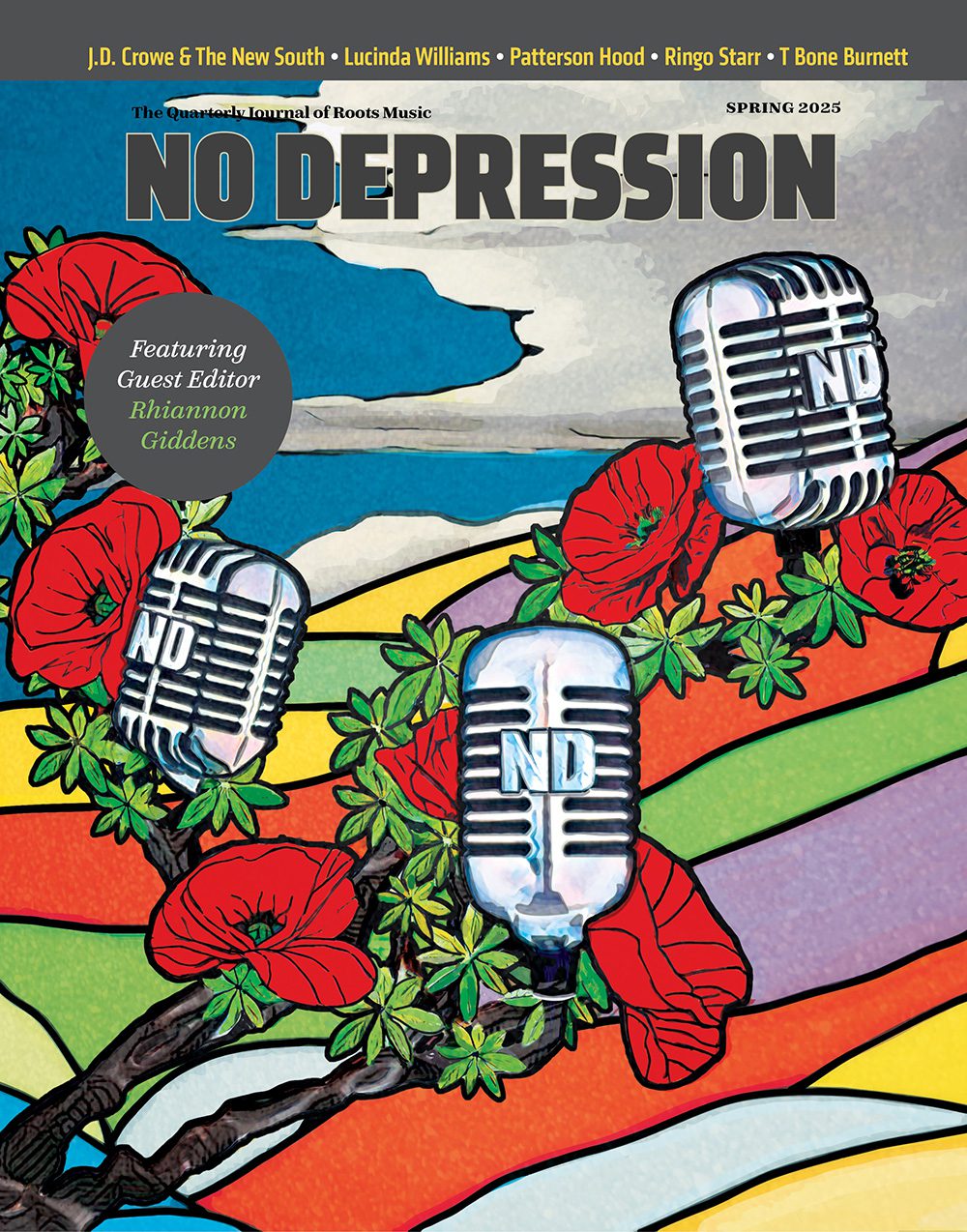Pioneer Bluegrass Days – Living History Museum (Pioneer, AZ)
Mountains contained a wide, gray sky; gunshots echoed faintly from the shooting range down the road; the wind sang atonally, unwelcomely, through the microphones. But the several hundred people who camped out, and the handful more who were able to find hotel rooms a few miles away, enjoyed a rare weekend of bluegrass community at the Arizona Bluegrass and Old-Time Music Association’s fifth annual bluegrass festival.
Pioneer Bluegrass Days occupies, for a weekend, a development once intended to be an operating old west town, inspired by the likes of colonial Williamsburg in Virginia. A fifteen-minute drive north of Phoenix on the road to Flagstaff, the tiny attraction is showing the effects of hard times wrought by spiffier competition. For sequestering a large group of like-minded music lovers, though, it was ideal, and while the best performances took place on the town-square-gazebo-like stage, the most fun undoubtedly was had by those trading licks ’round the clock in the campground.
Founded by the Phoenix-area Shady Creek Band, the festival provides a showcase for local and regional talent and, most importantly, encouragement for new fans and players. The association’s charter includes financial and other support for a children’s bluegrass club, Jam Pak Blues ‘n’ Grass Neighborhood Band — twenty of whom played and sang a fifteen-minute set on Sunday, and were present en masse at many of the workshops held over the weekend.
Local clowns the McNasty Brothers got a workout for their patented “Superstition Cowgrass”, crack musicianship surrounded by props and stunts. In addition to their own scheduled sets, which included entertainment for a massive Saturday night barbecue, the band stood in for former local favorites Front Page News, whose much-anticipated reunion was thwarted by bad flying weather. Other area performers included Tucson band Degrees Plato, Spring Valley Breakdown, and hosts the Shady Creek Band, whose bassist, Candice Bebber-Miracle, showed no sign of the strain of having organized and run the whole event, with the help of dozens of volunteers.
This year’s headliners, Southern California band Lost Highway and two-time Grammy-winner the Nashville Bluegrass Band, pitched the event out of the realm of a folksy get-together and into a spotlight sufficient to attract new fans, for the music as well as the fest. The Nashville supergroup’s performance on Sunday afternoon was especially fine for those inclined to the more traditional bluegrass sound, and, anticipating a vocal workshop schedule to follow their set, it included half a dozen a cappella numbers illustrating why they won the International Bluegrass Music Association’s Vocal Group of the Year award five years in a row. Not even the startling crack of gunshots from the thrice-daily showdown at the movie set on the grounds could challenge the awed attention of the crowd to the band’s near-organic harmonies, grown and synthesized from R&B, doo-wop, barbershop, and a majority portion of bluegrass and old-time gospel.
Later, in the workshop, the group was asked how they picked their parts. They had to stop and think before answering, with a five-minute math lecture revealing a doctorate-level grasp of music theory behind all that intuition. The band’s members, which include some of the most in-demand session players in Nashville, were of the same mind regarding early influences. They cited youthful exposure to R&B, and especially the easy opportunities to sing along with Dolly Parton and Porter Wagoner. Banjo player Alan O’Bryant explained, “She sings the high part and he sings the low part. There was always an empty part right in the middle!”
Highlights of Sunday’s performances, all loaded with sabbath songs, were, perhaps naturally, provided by the big national acts. Lost Highway performed a memorable “Lord Let Me Die” from its first record, made when Nashville Bluegrass Band fiddler Stuart Duncan was a member, but the most moving musical moment was the Nashville group’s cover of Utah Phillips’ “Orphan Train”. The old west setting, dark skies, and dry, endless wind lent a poignant immediacy to the plight of orphans shipped west to find families and new lives in the harsh frontier.


